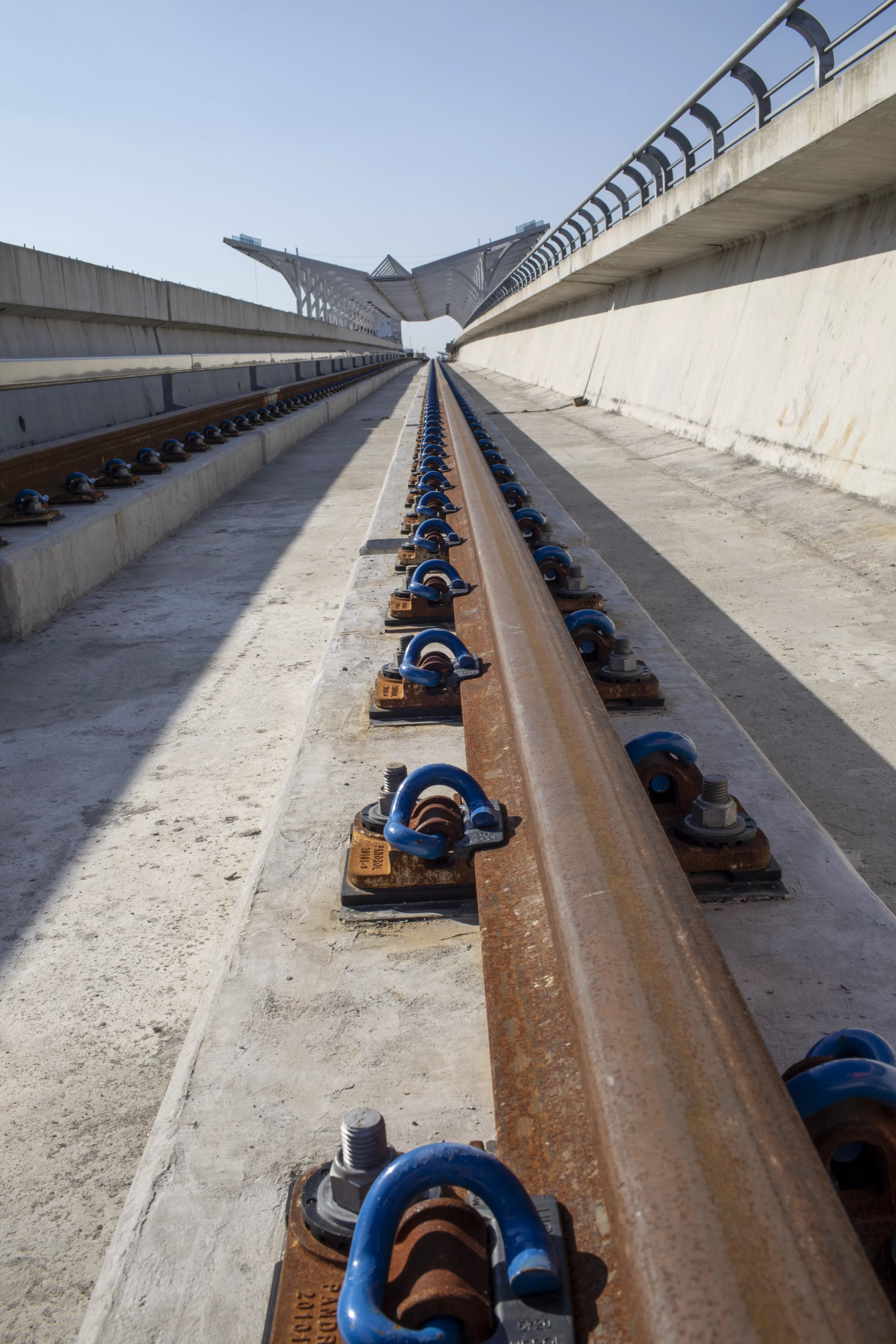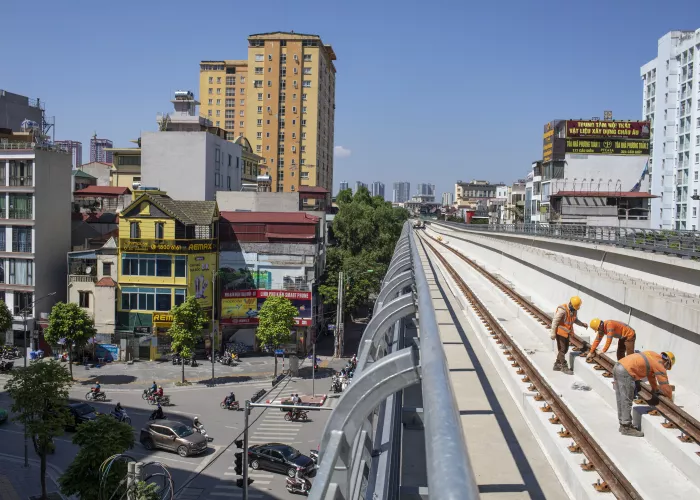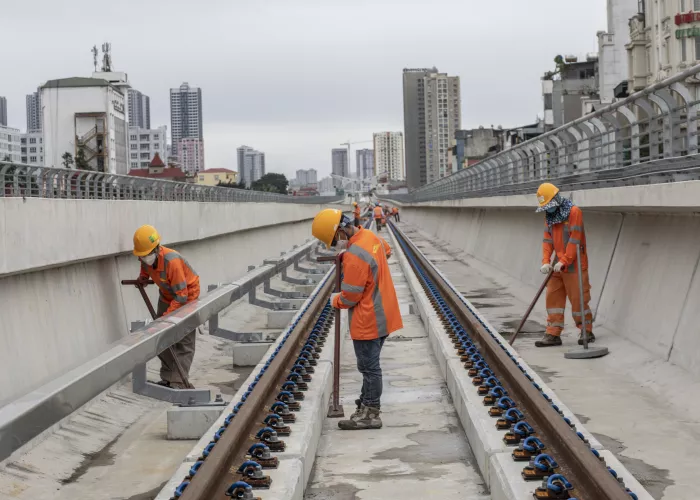
Hanoi moves forward with rapid transit
Hanoi has 7.6 million people, and certainly just as many two-wheeled vehicles, the preferred, and often familial, means of travel for the Vietnamese. Between 1995 and 2005, two-wheeled traffic increased sixfold, while automobile traffic was multiplied by 30, with the expected environmental and public health consequences, in line with booming population growth. To address this transportation crisis, the government launched a master plan in 2011 to build eight metro lines in the Vietnamese capital by 2050.
Colas Rail is taking part in the construction of Line 3 on behalf of the Hanoi Metropolitan Railway Management Board. Twelve kilometers in length, it will connect Hanoi’s historic center to the western edge of the city. The company is laying track both on viaducts and underground, installing electromechanical equipment in stations as well as power supply systems, and setting up the rolling stock maintenance depot at the end of the line. For this last works package, Colas Rail is part of a consortium with Alstom and Thalès.
On the front lines

At nightfall, traffic levels subside on Hanoi’s main thoroughfares, leaving room for the site machines that move into position along the viaduct. About 100 meters of track are installed each evening by about 20 workers. Concrete is poured by machines at night so as not to disturb traffic, which is extremely heavy during the day. In all, as part of the project for Line 3 of the Hanoi Metro, 32 kilometers of track will be installed by Colas Rail: 7 kilometers at the maintenance depot, 17 kilometers on viaducts, and 8 kilometers underground. Once completed, the metro line will connect Hanoi’s central railway station to three of the city’s largest universities, also serving its main cultural sites, such as the Temple of Literature, located in the historic center. It is estimated that 8,600 passengers will be carried by Line 3 per hour in each direction.
Another reality

Twelve stations will be built along the line, thus one every kilometer. The second works package awarded to Colas Rail relates to the installation of electromechanical equipment in the stations: ventilation, air filtration and smoke extraction systems; fire protection and detection systems; escalators and elevators; wastewater pumping systems.
At the site, workers are able to navigate through the premises virtually and, by referring to a 3D projection of the electromechanical equipment to be installed, can choose the best locations and verify their dimensions. This innovation, called HoloBIM, was developed by a start-up having received support from Colas Rail and has been tested on two projects: Line 3 of the Hanoi Metro and the Rennes Metro in France. HoloBIM is particularly suited to these kinds of installations when carried out underground, which are often more complex due to the larger number of equipment connections.
A new era

For the systems aspects of this metro line project (rolling stock, signaling and telecommunications), Colas Rail is working with several other French firms: Alstom and Thalès (its consortium partners) as well as Systra for engineering. As part of this latter contract, Colas Rail is supplying the high-voltage systems as well as around 40 items of equipment for rolling stock maintenance (bogie washing and cleaning equipment in particular) at the depot located in Nhon, to the west of Hanoi. Two years of warranty service on the equipment are also to be provided. With this first project in Vietnam, Colas Rail intends to cement its position as a preferred partner in the country, with the aim of standing out from its well-established Asian competitors. The highly anticipated Line 3 will allow Hanoi to breathe more easily while the city continues to grow at a rapid pace.